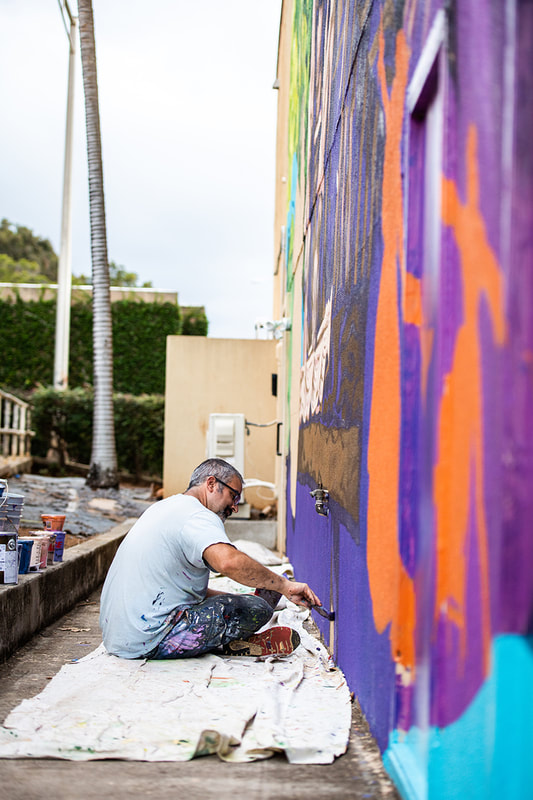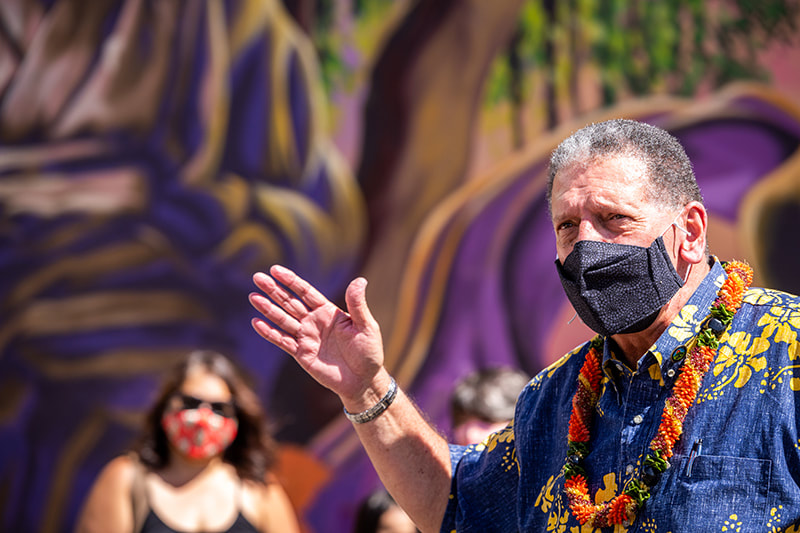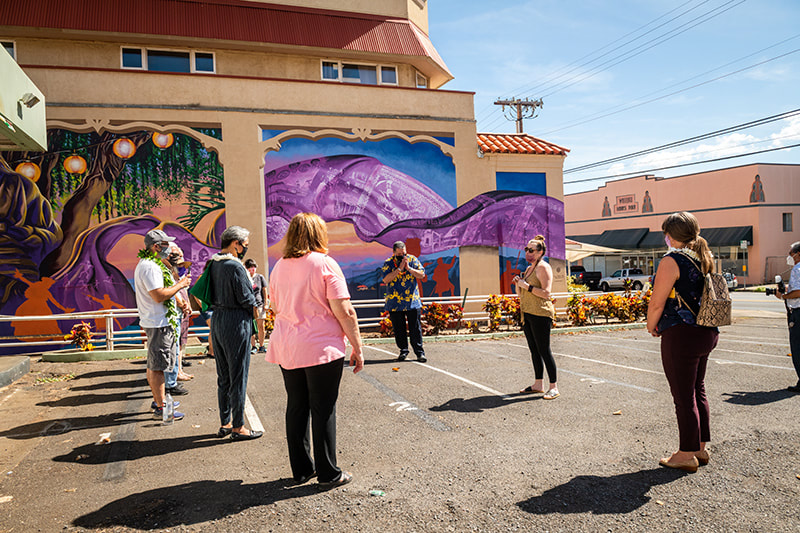Led by Kumu hula Sissy Lake-Farm, who serves as executive director of Hale Hōʻikeʻike at the Bailey House/ Maui Historical Society as well as a core ST*BA collaborator, the blessing was attended by Wailuku community members that went above and beyond in sharing their mana'o with the program team in order to portray an accurate and inspiring tribute to the Wailuku arts.
"As the blessing was underway, I took a look around me at some of the people who helped contribute to this latest mural project," shares Okdeh, "The people around me helped craft this vision over a period of two weeks. It was a relief and an honor to learn that everyone felt that I had done justice to our conversations in the design. They can find elements of what they contributed in words and photographs in the mural before them."
Mural elements include visions of past and present Wailuku arts memories and influences, displayed on a billowing purple kimono being created by a teacher and her student from the 1911 Kanda Home in Wailuku, which was a boarding school for "unfortunate Japanese girls." Images include the St. Anthony Boys' School Band of the 1950s with conductor Walter Garcia; Aunty Emma Sharpe, who taught hula classes in Wailuku; Hawaiian Music Icon Willie K; the Philippine tinikling dance - done between bayuhan, wooden pestles used to pound husks off of rice grain; Maui Chamber Orchestra; Maui Academy of Performing Arts and more, with art forms based in Japanese, Portuguese, Filipino and Hawaiian cultures. Together, the piece speaks to Wailuku as the hub of migration and multiculturalism that has given us so many chapters of artistic flavor since memory and available archives serve.
The ʻōlelo noʻeau included in the mural composition reads, "Ma kāhi o ka hana he ola malaila," translated as where work is, there is life.
Okdeh continues, "In my experience of painting murals for over two decades, it's always a question about how the community-at-large will receive and interpret a project once it's finished. If the blessing was any indication, people are starting to take ownership. That's a beautiful thing, and it gets to the heart at what Small Town Big Art does. These murals are not created in a vacuum but done as a response to a wealth of community engagement before a design is even created."
Unlike a general artist grant or commission, SMALL TOWN * BIG ART projects require applicants to exhibit advanced experience in creating communal or public art, significance to Wailuku, alignment with an ʻōlelo noʻeau selected in collaboration with Hale Hōʻikeʻike at the Bailey House/ Maui Historical Society and a period for collaborative project development with the ST*BA team.
"This allows us to adhere to the guidelines set forth by the National Endowment for the Arts grant that helped us launch the program," shares ST*BA's Kelly McHugh-White, "which ultimately brings arts to the table with municipal government to revitalize Wailuku through creative placemaking. Without the incredible range of community participation we're seeing in one ST*BA project to the next, our program could not be this successful. Eric is a wizard at this process."












 RSS Feed
RSS Feed